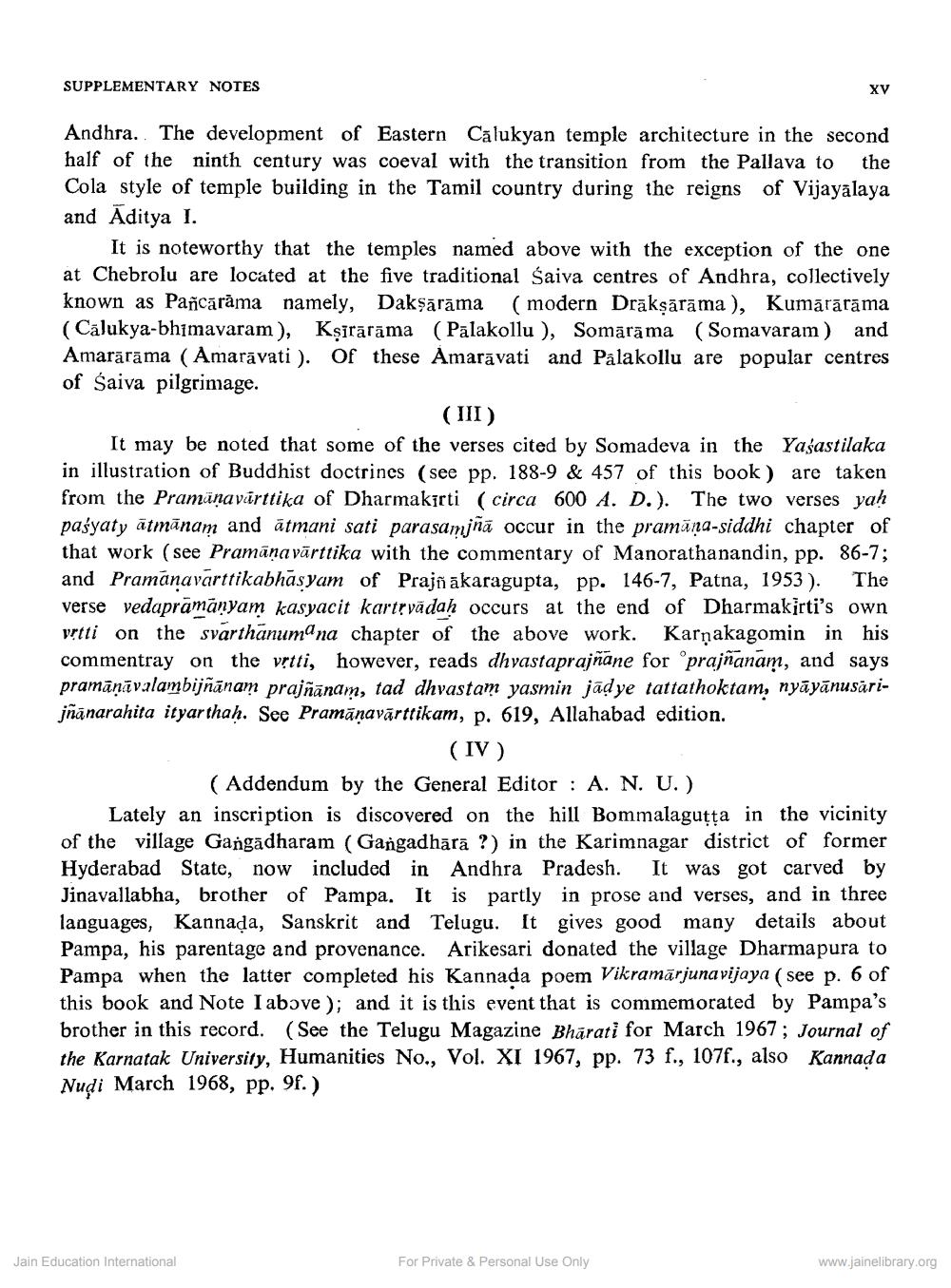________________
SUPPLEMENTARY NOTES
XV
Andhra. The development of Eastern Calukyan temple architecture in the second half of the ninth century was coeval with the transition from the Pallava to the Cola style of temple building in the Tamil country during the reigns of Vijayalaya and Aditya I.
It is noteworthy that the temples named above with the exception of the one at Chebrolu are located at the five traditional Saiva centres of Andhra, collectively known as Pañcārāma namely, Dakşārāma (modern Drākşārāma), Kumārārāma (Cālukya-bhimavaram), Kşīrārāma (Pālakollu ), Somārama (Somavaram) and Amarārāma (Amarāvati). Of these Amaravati and Palakollu are popular centres of Saiva pilgrimage.
(III) It may be noted that some of the verses cited by Somadeva in the Yašastilaka in illustration of Buddhist doctrines (see pp. 188-9 & 457 of this book) are taken from the Pramāna vārttika of Dharmakirti (circa 600 A. D.). The two verses yah paśyaty ātmānam and ätmani sati parasamjñā occur in the pramāņa-siddhi chapter of that work (see Pramāņavārttika with the commentary of Manorathanandin, pp. 86-7; and Pramanavarttikabhāsyam of Prajñākaragupta, pp. 146-7, Patna, 1953). The verse vedapramāṇyam kasyacit kartrvādah occurs at the end of Dharmakirti's own vrtti on the svarthanuma na chapter of the above work. Karnakagomin in his commentray on the vrtti, however, reads dhvastaprajñāne for oprajñanam, and says pramāṇāvalambijñānam prajñānam, tad dhvastam yasmin jad ye tattathoktam, nyāyānusärijñānarahita ityarthah. See Pramānavārttikam, p. 619, Allahabad edition.
(IV) (Addendum by the General Editor : A. N. U.) Lately an inscription is discovered on the hill Bommalagutta in the vicinity of the village Gangādharam (Gangadhāra ?) in the Karimnagar district of former Hyderabad State, now included in Andhra Pradesh. It was got carved by Jinavallabha, brother of Pampa. It is partly in prose and verses, and in three languages, Kannada, Sanskrit and Telugu. It gives good many details about Pampa, his parentage and provenance. Arikesari donated the village Dharmapura to Pampa when the latter completed his Kannada poem Vikramārjuna vijaya ( see p. 6 of this book and Note I abɔve ); and it is this event that is commemorated by Pampa's brother in this record. (See the Telugu Magazine Bhārati for March 1967; Journal of the Karnatak University, Humanities No., Vol. XI 1967, pp. 73 f., 107f., also Kannada Nudi March 1968, pp. 9f.)
Jain Education International
For Private & Personal Use Only
www.jainelibrary.org




